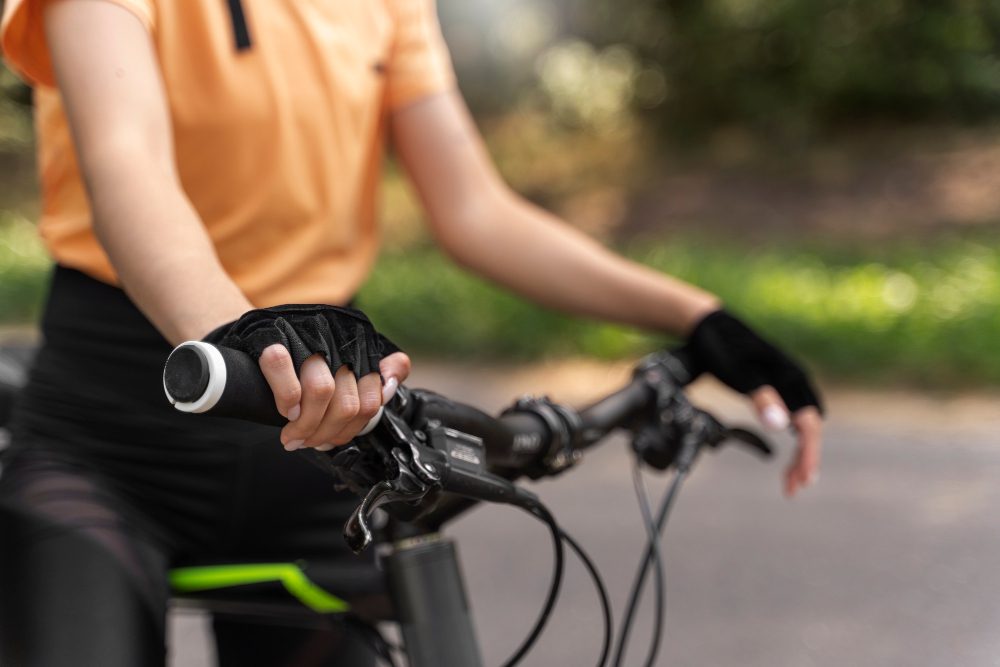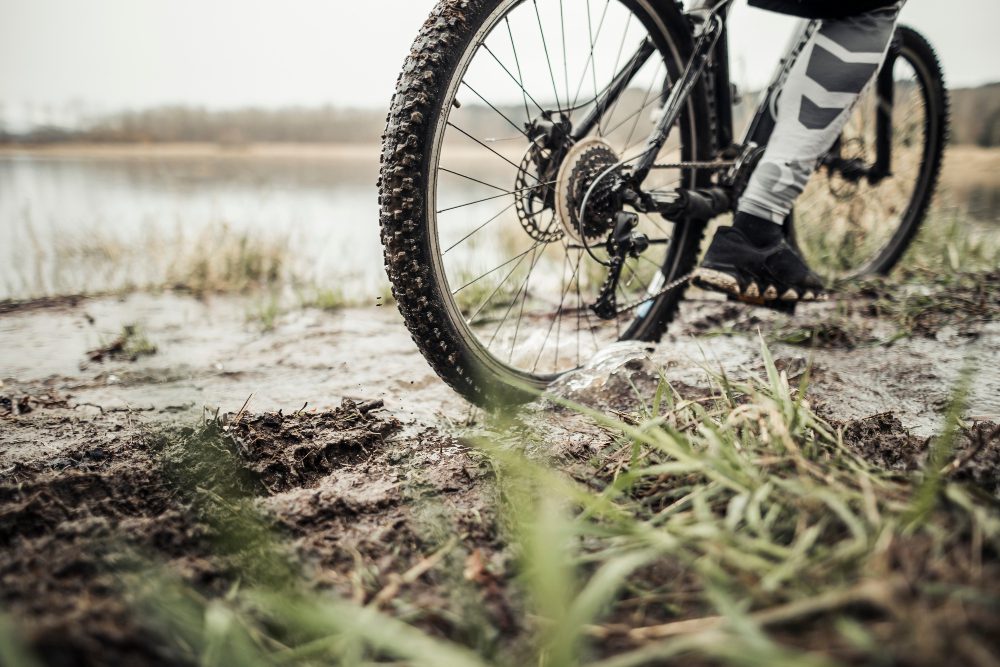What are the basic skills in biking?
Biking is a popular leisure activity and mode of transportation for people of all ages. Whether you’re a beginner or an experienced cyclist, it’s important to have a solid foundation of basic biking skills to ensure your safety and enjoyment on the road. In this article, we will explore the essential skills every cyclist should master, from bike handling to traffic awareness.
Bike Handling Skills
One of the fundamental skills in biking is bike handling. This includes balancing, steering, and braking. Balancing on a bike may seem simple, but it’s crucial to maintain proper posture and distribute your weight evenly. Practice riding in a straight line, turning corners smoothly, and stopping confidently using both your front and rear brakes.
Quote: “Bike handling skills are the building blocks of cycling proficiency.” – Cycling UK
Traffic Awareness
Cycling in traffic requires a heightened sense of awareness and knowledge of road rules. Understanding how to navigate intersections, communicate with other road users, and anticipate potential hazards is essential for staying safe on the road. Keep a vigilant eye on your surroundings, signal your intentions clearly, and make yourself visible to motorists by wearing bright clothing and using lights when necessary.
Basic Bike Maintenance
Maintaining your bike is not only crucial for its longevity but also for your safety. Basic bike maintenance skills include checking tire pressure, adjusting brakes and gears, and lubricating the chain. Regularly inspecting your bike for any signs of wear and tear, such as loose bolts or worn brake pads, can prevent accidents caused by mechanical failures.
Tip: A well-maintained bike will perform better and provide a more enjoyable riding experience.
Route Planning
When going on longer rides or exploring new areas, having good route planning skills can greatly enhance your biking experience. Familiarize yourself with local cycling infrastructure, such as bike lanes and shared paths, and utilize mobile apps or online maps to find the safest and most enjoyable routes. Consider factors such as road conditions, traffic volume, and elevation to ensure a smooth and enjoyable ride.
Group Riding Etiquette
For those interested in group rides or cycling events, understanding group riding etiquette is essential. Maintaining proper spacing between riders, communicating effectively with hand signals or verbal cues, and being aware of the group’s pace are all important aspects of riding in a group. Additionally, being respectful to fellow riders and following any specific guidelines or rules set by the group can contribute to a positive and safe riding experience for everyone involved.
How can a beginner get better at cycling?
1. Start with the basics
Before diving into more advanced techniques, beginners should focus on mastering the basics of cycling. This includes learning how to balance, pedal smoothly, and brake effectively. By building a strong foundation, riders will have a solid base to improve upon.
2. Practice regularly
Consistency is key when it comes to improving any skill, including cycling. Beginners should aim to practice regularly to build endurance and develop muscle memory. This can be done through short rides around the neighborhood or longer rides on weekends.
3. Set achievable goals
Setting realistic goals can help beginners stay motivated and track their progress. Whether it’s increasing the distance traveled or improving average speed, having specific targets can provide a sense of accomplishment and drive further improvement.
4. Join a cycling group or club
Participating in group rides or joining a local cycling club is a great way for beginners to learn from experienced riders and get valuable tips and advice. Cycling groups often organize training rides, social events, and provide a supportive community for riders of all levels.
5. Seek professional guidance
For those looking for more structured training, working with a professional coach or enrolling in a cycling course can be beneficial. Coaches can provide personalized feedback, help with technique improvement, and design training plans tailored to individual needs.
6. Cross-train and strengthen your body
Cycling involves a wide range of muscles, so cross-training and incorporating strength exercises into your routine can help improve overall performance. Activities like swimming, running, or weightlifting can strengthen different muscle groups and enhance cycling abilities.
7. Improve bike handling skills
Mastering bike handling skills can significantly enhance a beginner’s cycling experience. This includes learning how to corner, descend, climb, and navigate different terrains effectively. Practicing these skills in a controlled environment, such as an empty parking lot, can help build confidence and improve technique.
8. Learn about bike maintenance
A well-maintained bike can make a big difference in performance and overall riding experience. Beginners should familiarize themselves with basic bike maintenance tasks like cleaning and lubricating the chain, changing a flat tire, and adjusting brakes and gears. Knowing how to troubleshoot common issues can prevent unnecessary disruptions during rides.
9. Stay motivated and enjoy the journey
Improving at cycling takes time and patience, so it’s important for beginners to stay motivated and enjoy the journey. Celebrate small victories along the way, find joy in exploring new routes, and remember that every pedal stroke is a step towards becoming a better cyclist.
10. Embrace continuous learning
Cycling is a lifelong pursuit, and there is always something new to learn. Whether it’s reading books, watching online tutorials, or attending workshops, embracing continuous learning can help beginners stay informed about the latest techniques, equipment, and training methods.
How do you ride a road bike for beginners?
1. Getting Started
Riding a road bike can be an enjoyable and rewarding experience for beginners. Before you start, make sure you have the right equipment. A well-fitted helmet, comfortable cycling clothes, and proper shoes are essential. Adjust your saddle height to ensure your leg is almost fully extended when the pedal is at the bottom of the stroke.
2. Mounting and Dismounting
To mount your road bike, stand on the left side of the bike and hold the handlebars. Swing your right leg over the saddle and settle onto it. To dismount, apply the brakes gently, swing your right leg back over the saddle, and land lightly on your feet.
3. Maintaining Balance
Maintaining balance is crucial when riding a road bike. Keep your weight centered over the bike and use your core muscles to stay steady. Look straight ahead and focus on a point in the distance to help with balance.
4. Shifting Gears
Understanding how to shift gears is vital for a smooth and efficient ride. Use the front derailleur to shift between chainrings for major gear changes and the rear derailleur for finer adjustments. Remember to shift gears before reaching a hill or changing speed.
5. Braking
Knowing how to brake properly is essential for safe road biking. Squeeze the brake levers gradually and evenly to control your speed. Shift your weight back slightly to prevent the bike from pitching forward.
6. Cornering
When approaching a corner, slow down and lean into the turn. Keep your outside pedal down and apply gentle pressure to the inside handlebar to maintain balance. Look through the turn and focus on where you want to go.
7. Riding in a Group
If you plan to ride with others, familiarize yourself with proper group riding etiquette. Maintain a consistent speed and avoid sudden or unpredictable movements. Communicate with hand signals and verbal cues to alert others of any changes in direction or hazards.
8. Climbing Hills
Climbing hills can be challenging but rewarding. Use a lower gear and maintain a steady cadence. Keep your upper body relaxed and focus on breathing deeply. Stand up if necessary, but avoid swaying the bike side to side.
9. Descending
When descending, get into a comfortable position with your hands on the drops or hoods. Shift your weight back slightly and maintain a firm grip on the handlebars. Look ahead and anticipate any potential hazards.
10. Practice and Progress
Remember, riding a road bike is a skill that improves with practice. Start with shorter rides and gradually increase your distance and intensity. Don’t be afraid to seek guidance from experienced riders or join a cycling club to enhance your skills.
“Success is not final, failure is not fatal: It is the courage to continue that counts.” – Winston Churchill
By following these basic guidelines, beginners can confidently ride a road bike and embark on a fulfilling cycling journey. Happy cycling!
| Item | Description |
|---|---|
| Helmet | A safety necessity to protect your head. |
| Cycling Clothes | Comfortable attire designed for optimal performance. |
| Clipless Pedals | Allow you to attach your shoes to the pedals, enhancing power transfer. |
| Saddle Bag | Provides storage for tools, spare tubes, and other essentials. |
- Ensure the road bike is in good working condition.
- Master the basics of mounting and dismounting the bike.
- Practice maintaining balance and proper body position.
- Learn how to shift gears effectively.
- Focus on braking techniques for safe stopping.
- Improve cornering skills by leaning into turns.
- Understand the dynamics of riding in a group.
- Develop strategies for climbing hills efficiently.
- Gain confidence in descending with control and stability.
- Continually practice and seek opportunities for skill enhancement.



